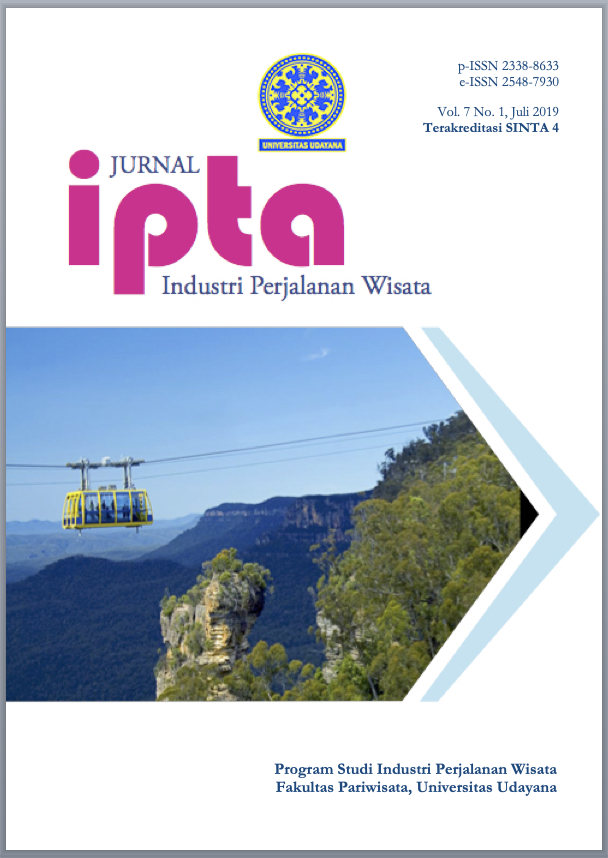IDENTIFIKASI POTENSI HUTAN MANGROVE SEBAGAI PENGUAT KAWASAN EKOWISATA DI PESISIR BALE-BALE
Abstract
Technological advances in UAV (Unmanned Arial Vehicle) photogrammetry have been more efficient and accurate in the field of mapping and monitoring surveys. This study aims to determine the level of potential mangrove forests seen from the density of its vegetation, mangrove species and know how the relationship to marine biota contained in coastal areas bale-bale Batam. The recording data was taken on 26-08-2017. The method used to determine the density is the transformation of the NDVI vegetation index combined with the field transect. the field transect was conducted to see the species and biota of its association contained in each type of mangrove forest vegetation. The results of this study indicate that mangrove in coastal bale-bale has an area of 4.915 Ha, with the potential of mangrove forest area is still in potential condition seen from the extraction vegetation density from the transformation of vegetation index used and with the identification of mangrove species that is Avecennia and Rhizopora, relationship with the type of biota association Ocypodidae, Coenobitadae, and Gobiidae especially for Rhizopora mangrove species, it is because rhizopora is the most dominant type of mangrove in the research location.
Downloads
References
Anurogo, W., Murti, S. H., & Khakhim, N. (2015). Analisis Perubahan Hutan Mangrove Dalam Penentuan Kawasan Rehabilitasi Dan Perubahan Stok Karbon Menggunakan Data Penginderaan Jauh (Di Teluk Banten, Serang Provinsi Banten) (Doctoral dissertation, Universitas Gadjah Mada).
Lillesand, T. M., & Kiefer, R. W. (1997). Penginderaan Jauh dan Interpretasi Citra. Penerjemah: Dulbahri, Prapto Suharsono, Hartono dan Suharyadi. Editor: Sutanto.
Anurogo, W., Lubis, M. Z., Khoirunnisa, H., Pamungkas, D. S., Hanafi, A., Rizki, F., ... & Lukitasari, C. A. (2017). A Simple Aerial Photogrammetric Mapping System Overview and Image Acquisition Using Unmanned Aerial Vehicles (UAVs). Journal of Applied Geospatial Information, 1(01), 11-18.
Campbell, J. L. (2004). Institutional change and globalization. Princeton University Press.
Kuenzer, C., Bluemel, A., Gebhardt, S., Quoc, T. V., & Dech, S. (2011). Remote sensing of mangrove ecosystems: A review. Remote Sensing, 3(5), 878-928.
Lubis, M. Z., Taki, H. M., Anurogo, W., Pamungkas, D. S., Wicaksono, P., & Aprilliyanti, T. (2017, December). Mapping the Distribution of Potential Land Drought in Batam Island Using the Integration of Remote Sensing and Geographic Information Systems (GIS). In IOP Conference Series: Earth and Environmental Science (Vol. 98, No. 1, p. 012012). IOP Publishing.
Rizki, F., Situmorang, A. D. L., Wau, N., Lubis, M. Z., & Anurogo, W. (2017). Mapping Of Vegetation And Mangrove Distribution Level In Batam Island Using SPOT-5 Satellite Imagery. Journal of Geoscience, Engineering, Environment, and Technology, 2(4), 264-267.
Vo, Q. T., Oppelt, N., Leinenkugel, P., & Kuenzer, C. (2013). Remote sensing in mapping mangrove ecosystems—An object-based approach. Remote Sensing, 5(1), 183-201.
Anurogo, W., & Lubis, M. Z. (2018). Modified Soil-Adjusted Vegetation Index In Multispectral Remote Sensing Data for Estimating Tree Canopy Cover Density at Rubber Plantation. Journal of Geoscience, Engineering, Environment, and Technology, 3(1), 15-24.





